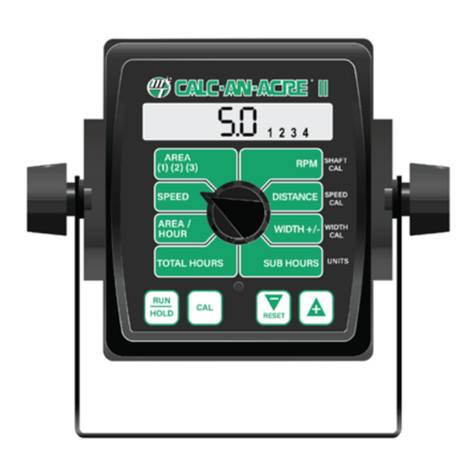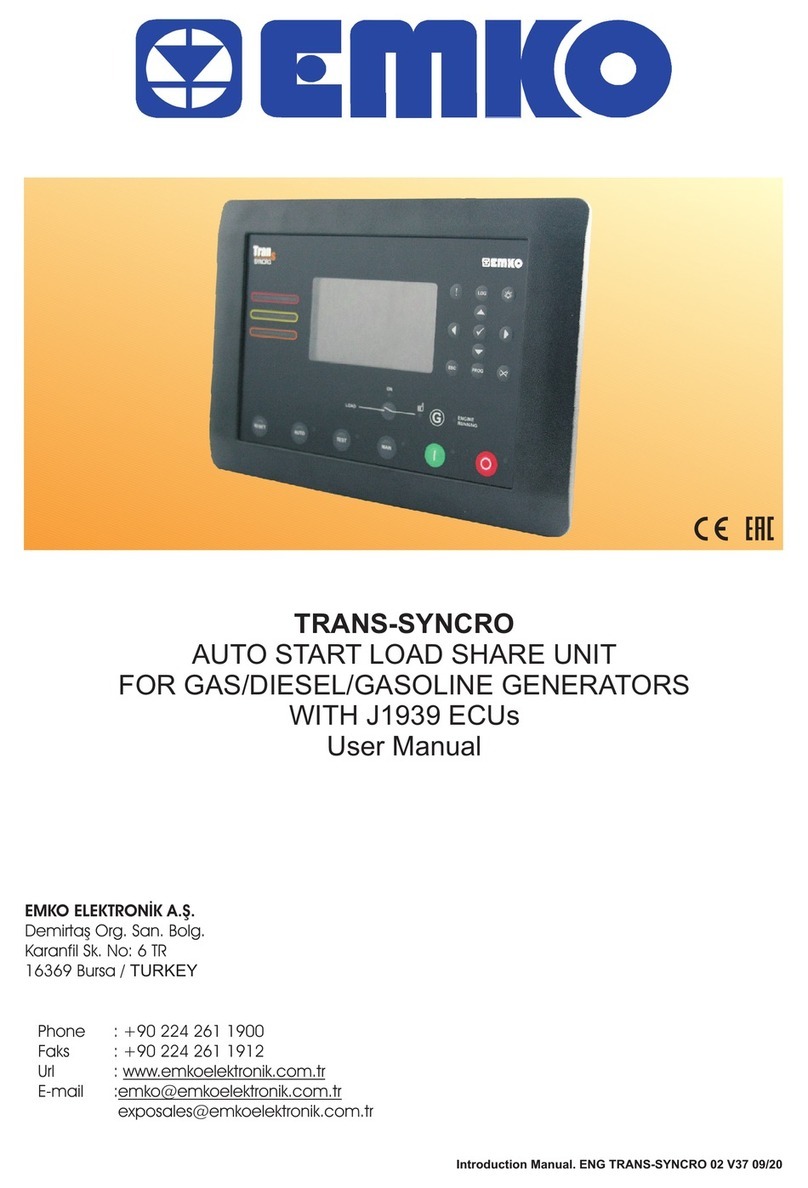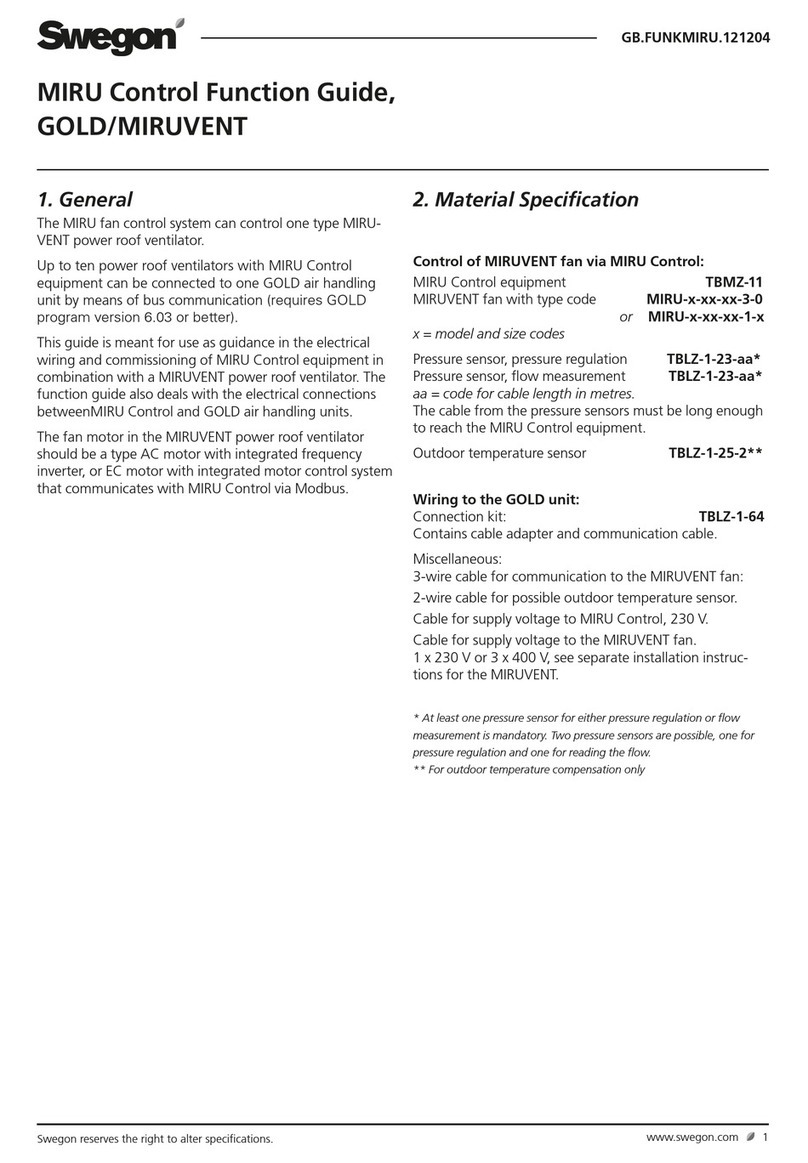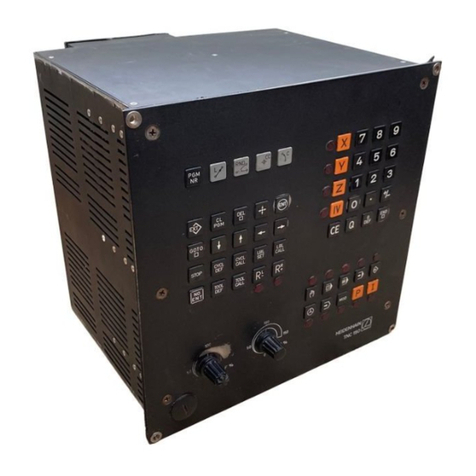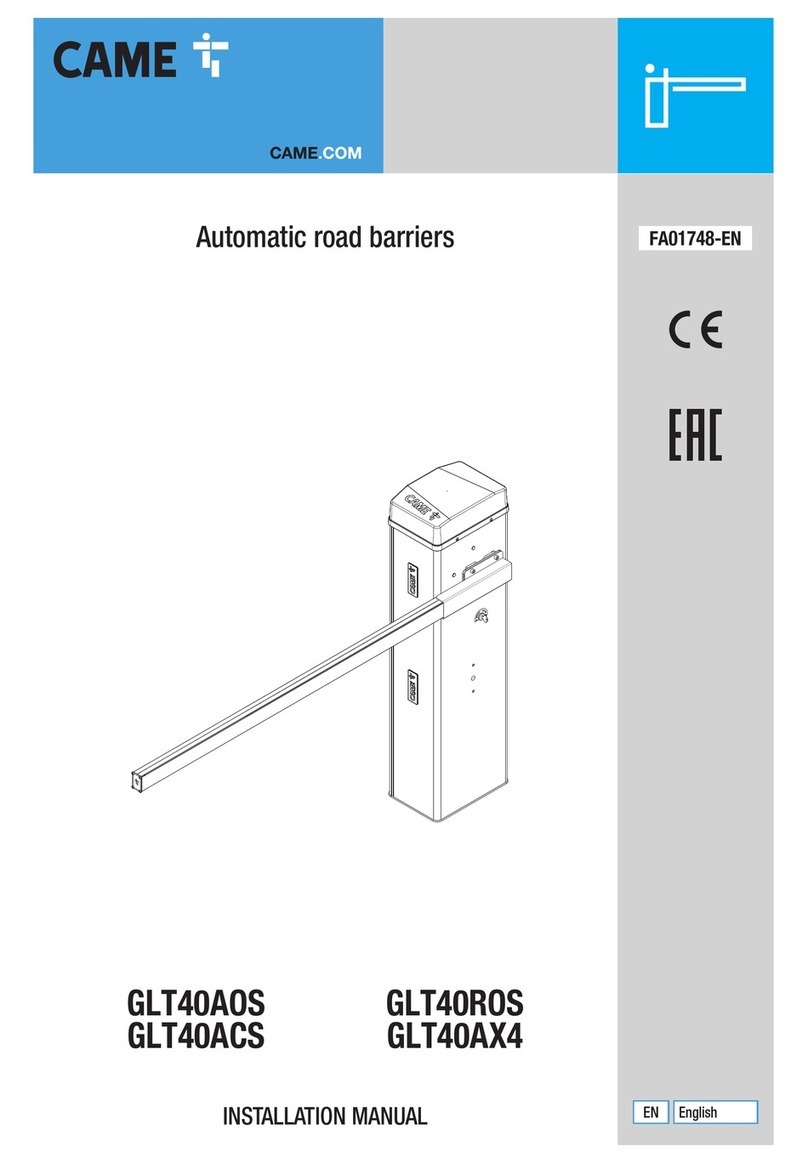
GB.EXCHSILV2.141119
We reserve the right to alter specifications. www.swegon.com 1
Instructions for the heat exchanger control system SILVER C
RX, RECOnomic, sizes 100/120, RECOsorptic, sizes 50-120
1. General
The heat exchanger control system is a control system for
380 W step motors. It is designed for precise and quiet
control of rotary heat exchangers in the SILVER C RX
ventilation units with standard rotor (RECOnomic) in size
100/120, and with sorption rotor (RECOsorptic) in sizes
05-120.
Integrated functions:
• 0 - 10 V DC analogue input for controlling the speed.
• Alarm for overloading, over-voltage and under-voltage.
• Protective motor switch with integrated current limit-
ing function.
• Short-circuit protected inputs and outputs.
• Digital input for start/stop.
• Digital input for alarm resetting.
• Integrated EMC filter.
In the size 50-80 SILVER C units the heat exchanger
control system is located inside the filter section in the
lower level. In the size 100/120 SILVER C units the heat
exchanger control system is located inside the fan or filter
section to the left of the centre section in the lower level
(viewed from the inspection side). For access, open the
inspection door.
Forbidden to start operation
It is absolutely forbidden to start operation until the
entire air handling unit, where the above-mentioned heat
exchanger control system is integrated, has been declared
to conform to relevant regulations in Machinery Directive
98/37/EEC and to existing national legislation, if applica-
ble.
The heat exchanger control system must not be energized
until the entire installation conforms to the provisions in
ALL relevant EU Directives. If the heat exchanger control
system has been damaged, for instance during transport,
it must be inspected and repaired by qualified personnel
before the voltage is connected.
Safety functions
The heat exchanger control system is protected against
phase-to-phase short.circuiting, and has integrated cur-
rent limiting function for protection of the motor.
The electrician is accountable for ensuring correct earth-
ing as well as protection according to local standards
and regulations. An earth fault circuit breaker, multiple
protective earthing or ordinary earthing can be used as
extra protection, provided that the local regulations are
complied with. The earth leakage currents exceed 3.5 mA.
Therefore a fixed, permanent installation and heavy-duty
protective earthing are required.
NOTE! If an earth fault occurs, there can be a direct cur-
rent component in the leakage current. Earth fault circuit
breakers should therefore be designed to be able to detect
this and be installed according to applicable national and
international regulations, where they are used.



